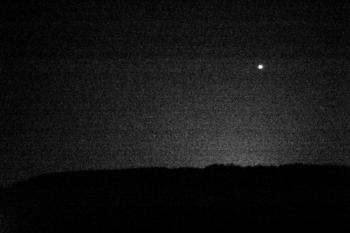Stargazing
The night sky: Who doesn’t enjoy looking up at the stars musing about the distance between them and us? Imagining what civilizations from pre-historic times forward thought when seeing what we know as constellations until Ptolemy, a Greek astronomer living in the second century – AD, not BC – came up with names for the star formations above him. There are 44 Greek constellations (yeah, I looked that up). According to Sky-Watch, Orion and Ursa Major/Big Dipper are the two most popular and most recognizable constellations.
I remember how fascinated I was to learn Ptolemy had named many constellations for Greek gods and goddesses – mythological to most, but not all of us. Perseus, Cassiopeia, Lyra, Orion, Andromeda ... And the zodiac was up there, too. Yeah, I could dig all that.
So this winter I’ve really added serious stargazing to my “hobbies,” shall we say? Because although I’ve always enjoyed gazing at the stars I’ve never really had the time or a burning desire to really learn about constellations, black holes and parallel universes.
I’m determined to photograph as many constellations as I can through each season, learning the brightest stars within some of them. For example, Polaris is at the end of the “handle” of the Little Dipper/Ursa Minor. Polaris is also the North Star.
Constellations we can see during winter here in the northern hemisphere are Orion (never here in summer, most because of that being so near the equator thing …); Canis Major and Minor, Gemini, Taurus, and Auriga; although I swear I saw a dipper last night (Jan. 20) … I’m quite certain Orion was above my backyard, well, make that side yard. You can’t mistake that hour glass frame, belt of three diagonal stars and sword of three vertical stars.
I drove around experimenting with a “night sky” setting on one of the Register’s cameras – my yard,Barrett Park, OP, Dogfish Head Beach. Unfortunately it was so cold last night and I didn’t even realize it at the time but my hands were shaking just enough to mess up my shots. I’m sharing a few anyway.
Someday I hope to shoot awesome images of constellations and celestial objects. Someone who does have an eye for photographing the night sky is local pro photographer Mike Leonard. He wrote an article last year I think it was, for the Register and Wiscasset Newspaper, on capturing the Milky Way with your camera. First thing he mentions is the moon shouldn’t be very visible. He also recommends the app Photo Pills, for iPhones and androids. Phones, that is! This app assists night sky lovers to not only find the best location(s) for the Milky Way and planets (and maybe even an alien spacecraft … no, Mike didn’t say that!) Mike did say the Photo Pills app “will also help steer you to make your best shots of the sun and moon rises and sets.” Check out Mike Leonard’s entire article on night photography at https://admin.boothbayregister.com/article/nighttime-photography/105107.
I also love taking pics of the moon, a most heavenly celestial body. Years ago I loved to chase the moon going here and there to see it in different locations. But my friend Linda Dow … now there’s a moon lover … she is out at OP (and other locations) on the night of every full moon. Her license plate should be MNGDES for Moon Goddess!
Oh! And if you love space and astronomy, you must check out the videos on YouTube of the sounds in space – often quite surreal. Then, next thing you know you’ll be watching info videos about Tesla’s 3-6-9 being the key to the universe! Hey, there are far less informative and entertaining ways to spend an afternoon.
If some of you out there have a telescope … sweet! If I ever win the lottery, a fine telescope is on my “Things I long for but can’t afford or justify buying” list.
I’ll leave you with two thoughts: Firstly, and this is mine – make some time for stargazing; for the wonder of it … and let your imagination soar among all things celestial.
Second is something Rachel Carson had to say on the subject in her 1956 book “The Sense of Wonder”: “My companion and I were alone with the stars: the misty river of the Milky Way flowing across the sky, the patterns of the constellations standing out bright and clear, a blazing planet low on the horizon. It occurred to me that if this were a sight that could be seen only once in a century, this little headland would be thronged with spectators. But it can be seen many scores of nights in any year, and so the lights burned in the cottages and the inhabitants probably gave not a thought to the beauty overhead; and because they could see it almost any night, perhaps they never will.”
Event Date
Address
United States
































